HP EliteBook 2170p Ultraportable Review: Business Class, But Business Savvy?
by Dustin Sklavos on November 30, 2012 12:00 PM EST- Posted in
- Systems
- HP
- EliteBook
- Ivy Bridge
- Laptops
Application and Futuremark Performance
While the HP EliteBook 2170p review unit we have does feature Intel's fastest ULV processor in the Core i7-3667U and at least a 7200-RPM mechanical hard disk, you'll see that the single channel memory operation takes a bit of a toll on performance. PCMark 7, in particular, seems very unhappy with the lack of solid state memory anywhere in the chassis.
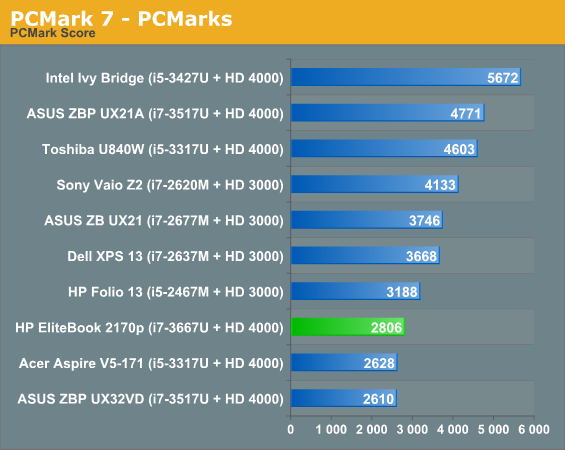
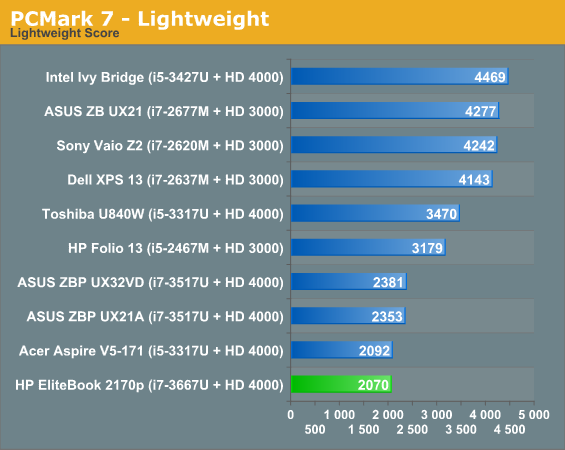
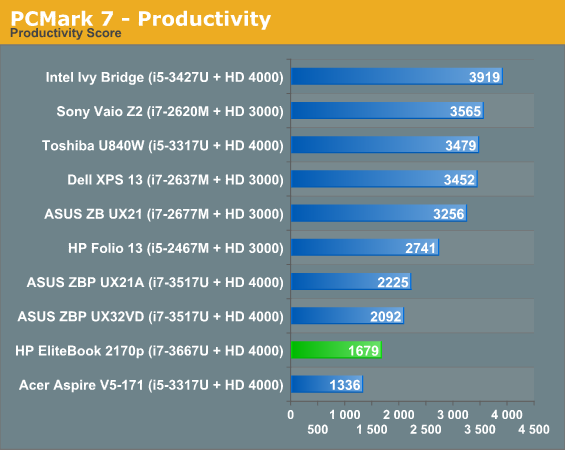
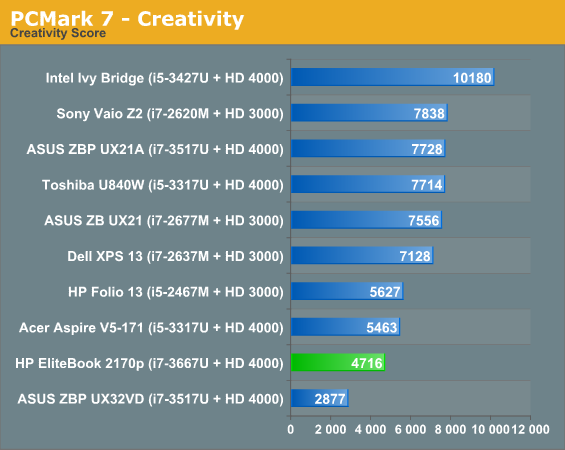
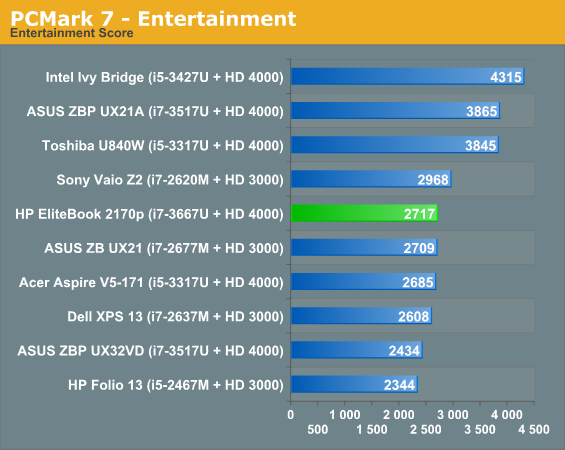
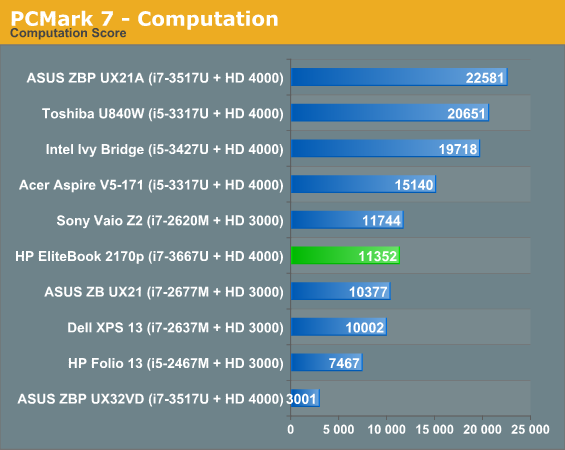

If QuickSync either doesn't kick in or doesn't efficiently kick in, scores in some cases can come out dismally low. I actually updated the drivers for the 2170p's HD 4000 to Intel's most recent as HP's stock drivers didn't give PCMark 7 its QuickSync boost.
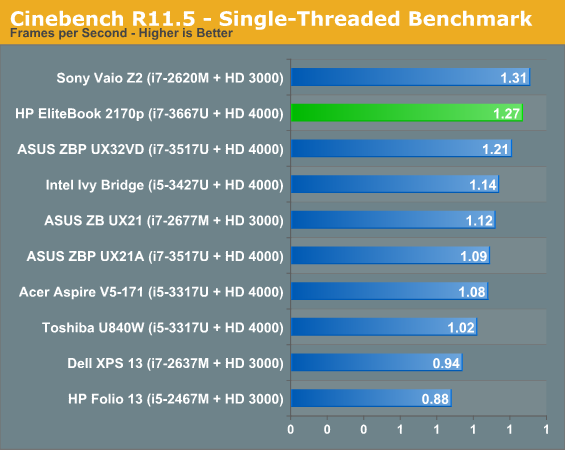
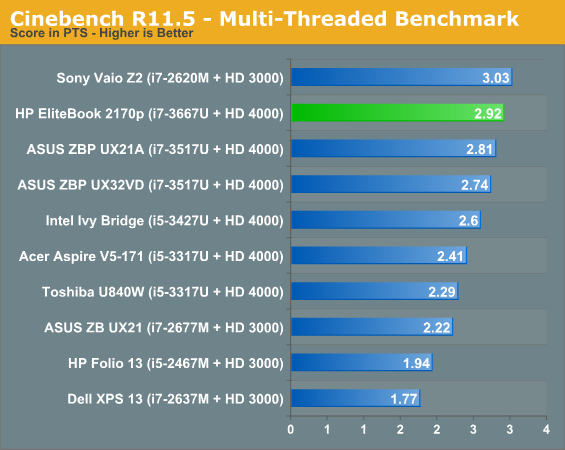
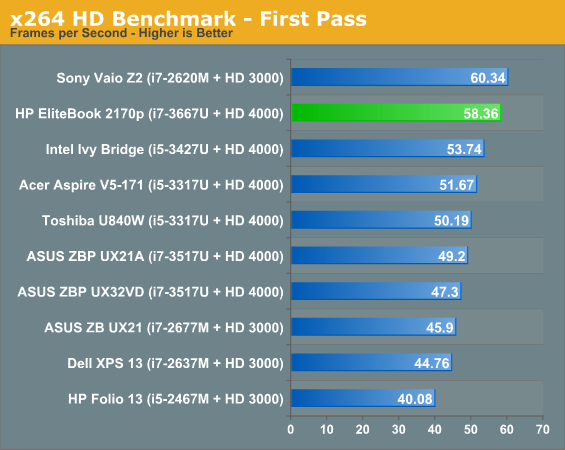
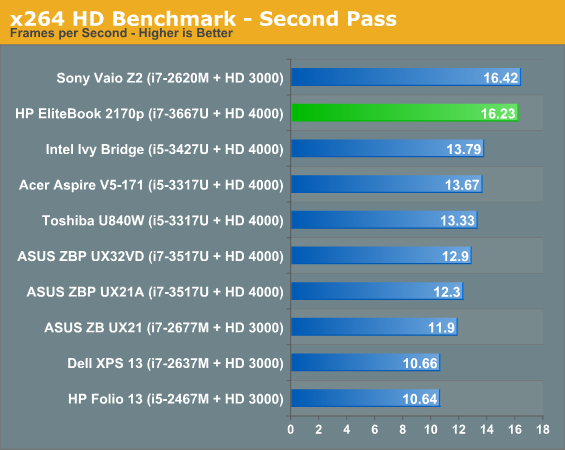
Switch over to CPU-centric workloads, though, and the EliteBook lines up where it's supposed to. The generational jump to Ivy Bridge allows a 17W processor to offer roughly the same performance as last generation's top end 35W. If you need the power it's there, but note that an i5-3317U seems to be able to get the job done very nearly as well. Ivy Bridge in general is a big win for ultraportables, but also pay attention to how the ASUS ZenBooks seem to have a harder time keeping their turbo up while the thicker chassis of the 2170p (and the Acer V5-171) seems to let the i7 run faster for longer.
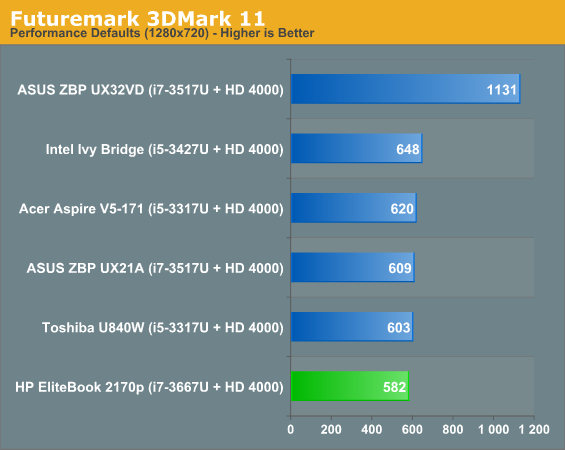
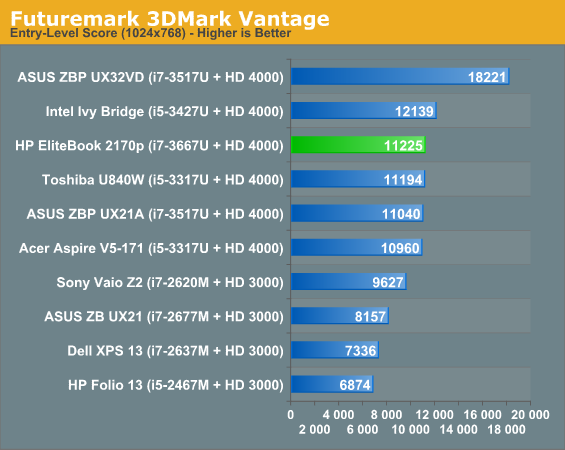
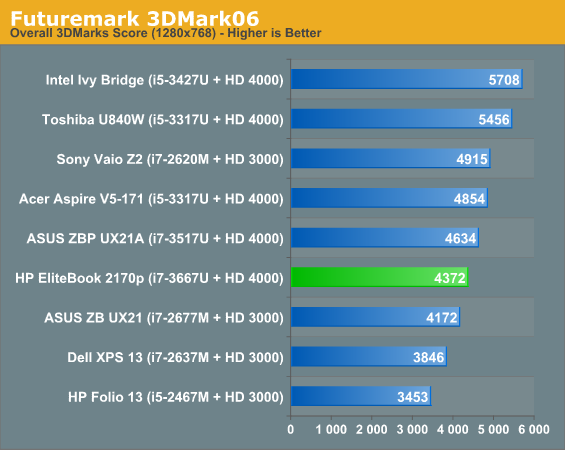
3DMark performance isn't terrible, but there does seem to be at least a minor hit owing to the single-channel operation. HP's Folio 13 ran in single-channel as well and sits at the bottom of each chart. The HD 4000 does remain a remarkably powerful integrated graphics option, though; I've been playing a few games on it and am continually impressed by its performance.










46 Comments
View All Comments
DiscoWade - Friday, November 30, 2012 - link
It does have one thing going for it: no Windows 8. (Before you start: My hatred for Windows 8 comes from actually using Windows 8.)sigmatau - Saturday, December 1, 2012 - link
So you don't know how to use Windows 8? Got it.greenbackz - Sunday, December 2, 2012 - link
lol.I hated a little bit on win8 when I didn't know how to do much. but not that I've learnt a few tricks here n there.. I'm liking it a lot more than previous windows OS' and definitely much better than OSX.
tayb - Monday, December 3, 2012 - link
You meant to say that your hatred for Windows 8 comes from your inability to learn how to use Windows 8.ShieTar - Monday, December 3, 2012 - link
Generally speaking, any OS that still needs to be learned is a horrible failure these days. Time spent using the OS instead of your software is already wasted time, but time spent learning how to even use the OS is just inacceptable. GUIs were kind of invented to reduce the need for OS manuals, not as a pretty way of hiding functionality away.afkrotch - Tuesday, December 4, 2012 - link
The problem is when you start adding in more and more functionality. There is no need to constantly display these things in front of your face. So they created a search function. Then they made the search function faster and faster. Win 8, takes no time to search.ajp_anton - Friday, November 30, 2012 - link
I was so hoping this would be the resolution, despite the odd numbers, or even a small typo of the resolution...Also I doubt this computer is 265mm thick =).
SodaAnt - Friday, November 30, 2012 - link
Here's the thing about business laptops. I can accept that some of them are thicker, I have a dell precision m4600, and I accept that its think because it has very good internals, cooling, battery, and upgradability. However, this laptop seems to have none of those things, except maybe good cooling, which isn't really that needed with a ULV chip.Finally, I don't get why they put the i7 in there. To me, it would make much more sense to even put a 512GB SSD in there, which would lead to a much faster laptop overall.
Voldenuit - Friday, November 30, 2012 - link
What's preventing the use of a mSATA SSD in the WWAN slot? Is it just that the mounting screw is for half-length cards, or is the slot incompatible with SSDs?arthur449 - Friday, November 30, 2012 - link
HP normally employs a whitelist on their UEFI/BIOS for mSATA/mPCIe slots, which means that even if you found an mSATA SSD that fit in the tiny space, it wouldn't work because the UEFI BIOS wasn't explicitly told to allow that particular device.There are ways around that, but it's a stressful process potentially ending in either a bricked laptop, one with curious intermittent problems, or one that works exactly like it should've in the first place.